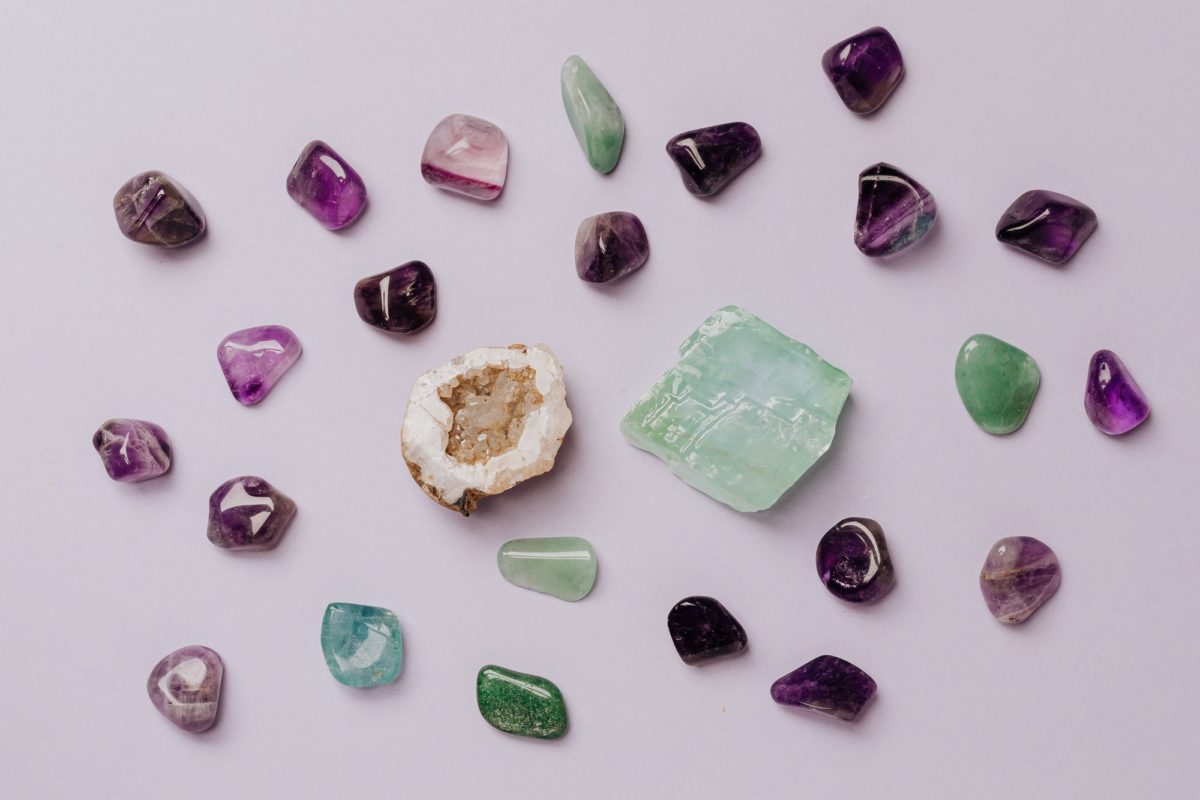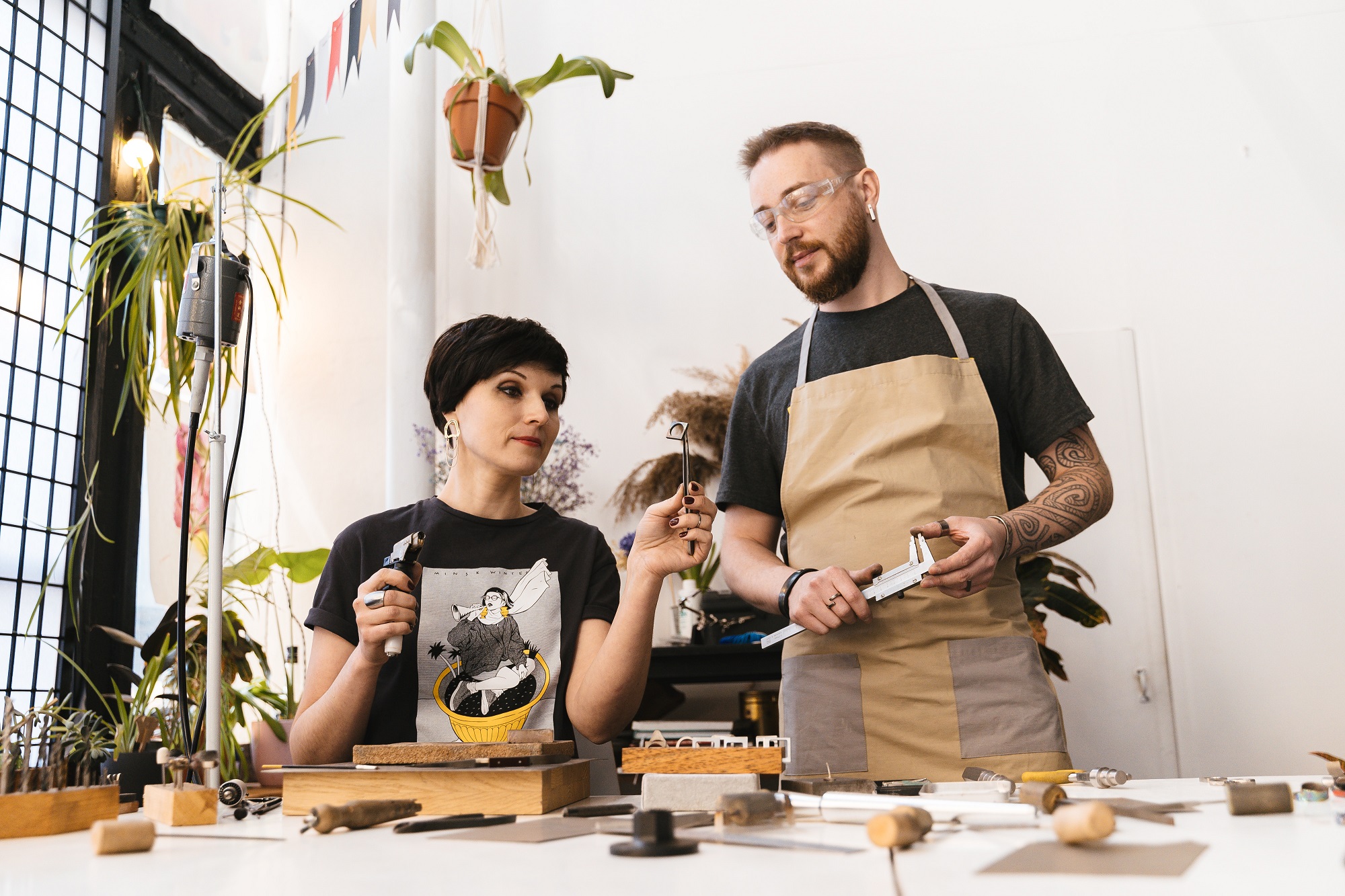Pre-Loved Stones & Recycled Gold: 3 Things to Look for in Sustainable Jewelry
Rubies. Emeralds. Sapphires. When all that glitters isn’t as it seems.

Searching for eco-friendly jewels means thinking holistically – a.k.a. from start to finish. What materials are they made of? Where and how are these materials made or extracted? Who was involved? What will happen to the pieces once you’re done with the jewel?
Let’s break down the criteria into three rock-sized components.
What’s going on
To date, gold mining continues to violate human rights. Poor safety standards cause on-site accidents and injuries, often killing low-wage workers. In Venezuela, armed groups control illegal mines with trafficked labor, where most of the gold is smuggled out of the country to make fine jewelry.[1]
“Transparency and traceability? The jewelry industry has always been completely the opposite because it’s almost impossible to discover where anything has come from,” explains Stuart Pool, an ethical gemstone dealer. “It all gets put into a big pot and mixed together.”[2]
The revival of recycled metals
But game-changers are forging a more ethical path. Precious metals, like gold, platinum, and silver are elements that can be melted down, refined, and repurposed without losing their quality.[3] This offers a more responsible choice for jewelry, as they avoid risks related to mined gold of unknown origins.[4]
But some critics say it’s not enough, demanding tougher regulations on trade traceability and stronger standards to protect mine workers. In their view, there will always be people searching for gold, thus, something must be done to ensure workers’ rights, safety, and security in the long-term.
In response, two standards – Fairmined[5] and Fair-trade – have successfully certified small-scale and artisanal gold mines, holding them accountable to the strictest benchmarks (everything from land use to gender parity). This helps jewelers trace the precious metals to the source, complete with third-party audits, and offers a glimmer of hope to an industry so rife with human and environmental abuses.

Falling for blockchain & pre-loved stones
Colored gems have risen to the top of the high jewelry (and fashion) industry in recent decades, thanks to their rainbow hues and vibrant versatility. While mined and extracted from the earth, colored jewels are harder to standardize in the same way diamonds can.
“Only 15% of diamond mining is artisanal, [while] 80% of colored gemstone mining is small-scale artisanal, involving some 30 million miners – and making formalizing the industry very tricky indeed,” explains an in-depth gemstone review in the Financial Times.[6]
But in 2019, blockchain technology transformed the industry. Pioneers, like the Emerald Paternity Test and Provenance Proof Blockchain, use digital ledgers and nanotechnology to trace the polished jewels back to rough rocks. They document a gem’s origin, mine, ethical and sustainability certifications, as well as treatment, cut, and color engineering – and this is all accessible to the buyer.
Pre-loved gems, also rising in popularity, breathe new life into pre-owned jewelry. This approach avoids causing new damage to the environment and may help reduce the demand for mining, lowering our individual carbon footprints.[7] Plus, competitively-priced vintage jewels would outlast any fast fashion piece, which is often made with alloy or plastic and ends up in landfills.[8]
While recycling and crypto tracing mark positive developments, the industry still lacks enforceable standards and viable benchmarks.
“The reality is that the standards for extraction today vary widely,” explains Alexander Thiel, a McKinsey expert in fashion and luxury. “There are also operations that have a significant negative effect on the environment and local communities.”
Yet, consumers are holding brands accountable. The Google search for “fine jewelry” paired with “sustainability” has skyrocketed. Brands that do not embed green initiatives today will render themselves irrelevant tomorrow. This is an accountability power we have, as consumers, to motivate higher standards for an improved, cleaner industry.
References
[1] “Sparkling Jewels, Opaque Supply Chains.” Human Rights Watch. Available at: https://www.hrw.org/report/2020/11/24/sparkling-jewels-opaque-supply-chains/jewelry-companies-changing-sourcing
[2] “The Rise of Guilt-Free Gems.” BBC. Available at: https://www.bbc.com/culture/article/20181219-the-rise-of-guilt-free-gems
[3] “What Is Recycled Gold?” Camellia. Available at: https://www.camelliarts.com/what-is-recycled-gold/
[4] “Sparkling Jewels, Opaque Supply Chains.” Human Rights Watch. Available at: https://www.hrw.org/report/2020/11/24/sparkling-jewels-opaque-supply-chains/jewelry-companies-changing-sourcing
[5] “The Fairminted Standard for Gold.” Fairminted.org. Available at: https://fairmined.org/the-fairmined-standard/
[6] “The Good Gem Guide.” The Financial Times. Available at: https://www.ft.com/content/9ec1b86d-b9b8-46c6-9e1b-57b13b0aef93
[7] “How Buying Pre-Owned Jewelry Helps the Environment.” My Gemma. Available at: https://mygemma.com/blogs/news/how-buying-used-jewelry-helps-the-environment
[8] “Absolutely not-fabulous – why fast-fashion jewellery is harming the planet.” Tegen Jewelry. Available at: https://www.tegenjewellery.com/absolutely-not-fabulous-why-fast-fashion-jewellery-is-harming-the-planet/
Author: Naomy Gmyrek
Latest from the Magazine